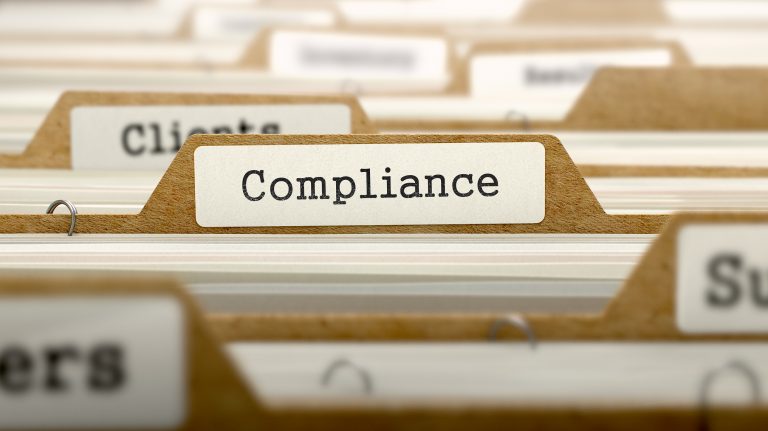
Monitoring internal compliance is an essential strategy for preventing data breaches in any organization. The strategy compliments protocols implemented to monitor external threats to your company data.
Monitoring employee compliance is critical to ensuring the integrity of your systems and reducing external threats by malicious third parties.
Risks of Internal Data Breaches – The Statistics
According to recent surveys, nearly half of the cybersecurity threats reported by organizations are partly caused by employees, either intentionally or unintentionally.
Today, the most significant security risk that employees in any organization face are phishing. Check the following data breach statistics from the healthcare industry.
- Over 20,000 patient records exposed in Catawba Valley
- Over 21,000 records exposed at Minnesota Department of Human Services
- 38,000 patient records exposed at Legacy Health
- 4 million records breached at UnityPoint Health
Phishing attacks are not confined to the healthcare industry. The 2018 Verizon Data Breach Investigations Report indicates that 17 percent of data breaches are as a result of employee errors and that 4 percent of people click on phishing campaigns.
Generally, employees don’t want to harm your business. However, their seemingly innocent actions can expose the organization to catastrophic losses resulting from data breaches. This is why monitoring compliance is critical for today’s businesses.
Internal measures should be put in place to contain unintentional or accidental acts by employees that can expose your systems at risk of data breaches. No matter how much you spend on mitigating outside threats, if you are not monitoring internal threats, your organization remains exposed.
Why Implement Internal Data Security Compliance
Data security breaches can leave your firm with significant monetary losses. Moreover, your brand reputation will suffer, and there may be fines. Various regulatory bodies are imposing penalties on companies without proper data handling and storage protocols.
- The HIPPA Act imposes various fines, ranging from $100 to $50,000 per data security violation
- The Sarbanes-Oxley Act (SOX) imposes various fines as well as prison time for data violations
Failing to comply with industry best practices for data handling has negative consequences for your organization.
Employee Compliance Management Training
Compliance rules are essential in any setting that involves access to sensitive data. Compliance management helps to streamline operations regarding access to the data.
Your security compliance management program should establish controls in your data environment and overall IT ecosystem. You should train employees and inculcate a culture of compliance in your organization.
However, employees detest anything that sounds or looks like mandatory training. How do you engage them to buy-in into your data compliance management efforts?
i) Personalize Cybersecurity Training
Training sessions are only useful to the extent that the trainees can understand and implement what is taught. Given the importance of cybersecurity awareness, come up with personalized training sessions to encourage employees to adopt security practices.
Tailor your programs to be personalized to what employees experience on a daily basis. For example, you can show them the impact of social media hacking based on recent cases identified in your industry.
Show employees what can happen if their Facebook accounts compromised and the impact that the breach can have on their lives. From there, explain how the same risks can apply to your business.
ii) Encourage Use of Strong Passwords
Using strong passwords is one of the ways of preventing breaches caused unintentionally by employees. Hackers use all sorts of methods to gain access to your files and servers. The typical method is merely guessing the passwords used to access the various systems.
Some communication devices such as network routers come configured with default passwords. The IT team should change the default passwords of all network equipment. Apart from this, employees should be mandated to use secure passwords. For example, IT can configure systems only to allow users to register if they have strong passwords that follow specific guidelines.
iii) Use Multifactor Authentication
Multifactor authentication is another way of ensuring data security compliance in your organization. Strong passwords are good, but multifactor authentication injects added security to your files and systems.
Multifactor authentication can take different forms, including supplementing passwords with corporate tokens, sending confirmation tokens to devices when a user is accessing systems, biometric options such as facial recognition, and many more.
Using Compliance Monitoring Software
You can streamline your security management activities by using compliance monitoring software for everything from COBIT to GDPR to keep track of data access in your organization. Through the software, you can use workflows to see historical access of sensitive servers in your firm.
You can also set the software to categorize the threats reported by employees and come up with robust risk mitigation strategies for preventing and countering threats.
With the increasing data risks in today’s competitive business world, organizations should leave no employee behind in their quest for full internal security compliance.
Author Bio
 Ken Lynch is an enterprise software startup veteran, who has always been fascinated about what drives workers to work and how to make work more engaging. Ken founded Reciprocity to pursue just that. He has propelled Reciprocity’s success with this mission-based goal of engaging employees with the governance, risk, and compliance goals of their company in order to create more socially minded corporate citizens. Ken earned his BS in Computer Science and Electrical Engineering from MIT. Learn more at ReciprocityLabs.com.
Ken Lynch is an enterprise software startup veteran, who has always been fascinated about what drives workers to work and how to make work more engaging. Ken founded Reciprocity to pursue just that. He has propelled Reciprocity’s success with this mission-based goal of engaging employees with the governance, risk, and compliance goals of their company in order to create more socially minded corporate citizens. Ken earned his BS in Computer Science and Electrical Engineering from MIT. Learn more at ReciprocityLabs.com.
This is an article provided by our partners network. It might not necessarily reflect the views or opinions of our editorial team and management.
Contributed content

Founder Dinis Guarda
IntelligentHQ Your New Business Network.
IntelligentHQ is a Business network and an expert source for finance, capital markets and intelligence for thousands of global business professionals, startups, and companies.
We exist at the point of intersection between technology, social media, finance and innovation.
IntelligentHQ leverages innovation and scale of social digital technology, analytics, news, and distribution to create an unparalleled, full digital medium and social business networks spectrum.
IntelligentHQ is working hard, to become a trusted, and indispensable source of business news and analytics, within financial services and its associated supply chains and ecosystems











